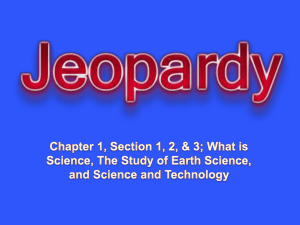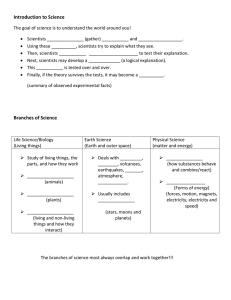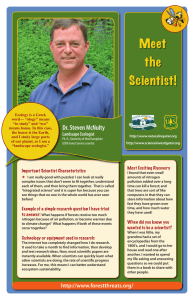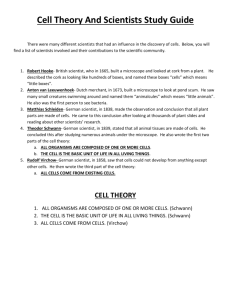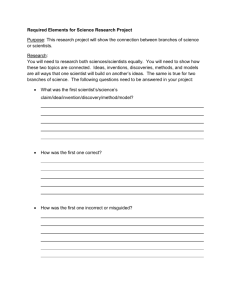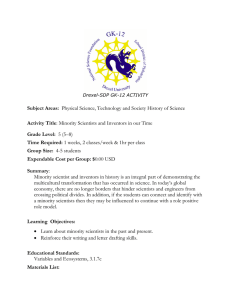Name: EboniFennell Lesson#: 1 Unit: What is a Scientist?
advertisement
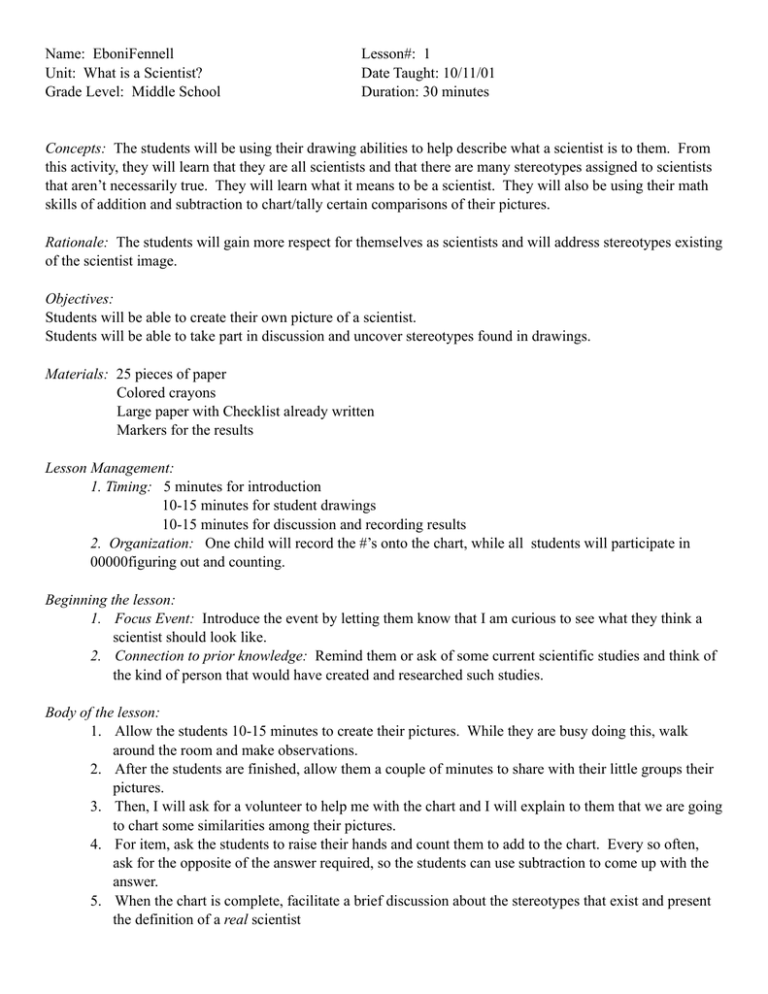
Name: EboniFennell Unit: What is a Scientist? Grade Level: Middle School Lesson#: 1 Date Taught: 10/11/01 Duration: 30 minutes Concepts: The students will be using their drawing abilities to help describe what a scientist is to them. From this activity, they will learn that they are all scientists and that there are many stereotypes assigned to scientists that aren’t necessarily true. They will learn what it means to be a scientist. They will also be using their math skills of addition and subtraction to chart/tally certain comparisons of their pictures. Rationale: The students will gain more respect for themselves as scientists and will address stereotypes existing of the scientist image. Objectives: Students will be able to create their own picture of a scientist. Students will be able to take part in discussion and uncover stereotypes found in drawings. Materials: 25 pieces of paper Colored crayons Large paper with Checklist already written Markers for the results Lesson Management: 1. Timing: 5 minutes for introduction 10-15 minutes for student drawings 10-15 minutes for discussion and recording results 2. Organization: One child will record the #’s onto the chart, while all students will participate in 00000figuring out and counting. Beginning the lesson: 1. Focus Event: Introduce the event by letting them know that I am curious to see what they think a scientist should look like. 2. Connection to prior knowledge: Remind them or ask of some current scientific studies and think of the kind of person that would have created and researched such studies. Body of the lesson: 1. Allow the students 10-15 minutes to create their pictures. While they are busy doing this, walk around the room and make observations. 2. After the students are finished, allow them a couple of minutes to share with their little groups their pictures. 3. Then, I will ask for a volunteer to help me with the chart and I will explain to them that we are going to chart some similarities among their pictures. 4. For item, ask the students to raise their hands and count them to add to the chart. Every so often, ask for the opposite of the answer required, so the students can use subtraction to come up with the answer. 5. When the chart is complete, facilitate a brief discussion about the stereotypes that exist and present the definition of a real scientist Scientist: One who engages in scientific processes, such as asking questions, collecting evidence, creating explanations, making connections to existing scientific knowledge, and communicating these discoveries. 6. Then give examples of times that they have acted like scientists. Ending the lesson: 1. Check for understanding: Ask the student to give a couple of examples of when they have been scientists. Transition: Challenge the students to recall this activity when they do science experiments and to remember that they are truly scientists. *Make a bulletin board if possible of the drawings. Reflection Eboni Fennell 10/18/01 “Draw A Scientist” reflection I was pretty surprised at the drawings of the class for this lesson. I had expected most of them to include many stereotypical characteristics of scientists, but I had no idea that the majority would include every stereotype listed on my checklist! The children love to draw so I knew that they would enjoy this lesson in specific. They were getting very into making their scientists look like “mad scientists” and the laboratories became very detailed. For the most part, the children really only looked at their own papers, but it was amazing to see how similar they all were. Following is a breakdown of the specific characteristics (I added a couple that the children seemed to share). This is a 3rd grade class of 20 students. Lab Coat: Eyeglasses: Facial Hair: Symbols of Research: Symbols of Knowledge: Technology: Male Gender only: Caucasian only: Middle~aged or Elderly Working indoor Mad Scientists Signs of Danger As you can see, the children had a definite idea of what a scientist should look like. After we talked a little about stereotypes in general, the children named me many different kinds about different people, mostly about professions. We have focused a little in the classroom about getting to know one another better and finding out new things about people everyday, so this idea of stereotypes played into this well. We talked a little about what a scientist really is and what are some real characteristics of one. I was very thankful that the children hadn’t done this activity before because I got the chance to get only their ideas about this~not from a previous teacher. I gave them a little definition of what a scientist is and had them give me examples of when they had acted like scientists. They named so many great ideas! One young boy talked about how his soda sprayed all over him one day after it was shaken and what he did to find out why it had done that. Some other students mentioned specific experiments they had done in class. Overall, I was very impressed with how the students could see themselves as scientists. They did a wonderful job!
